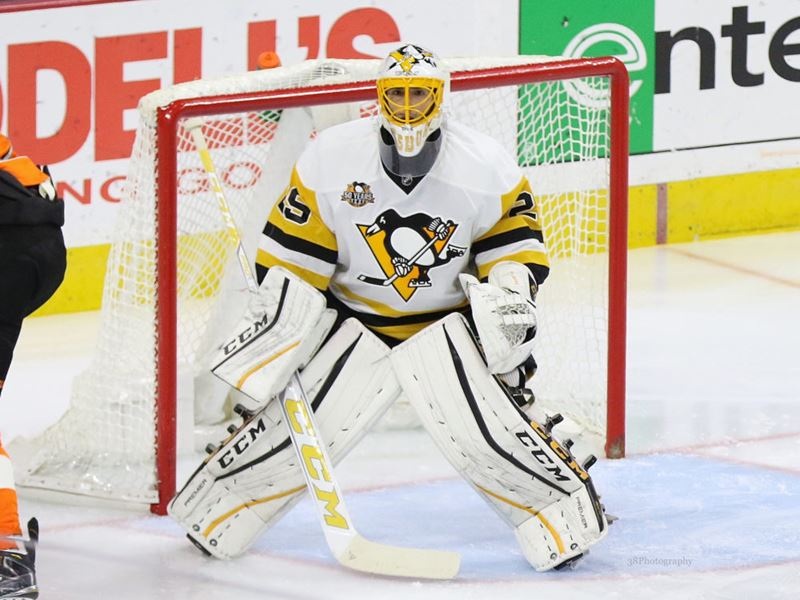
If you are a new comer to daily fantasy hockey, setting a selection could be a daunting task. However, to provide your fair possibility of a roi, all that you should do is use a couple of simple tactics. The study could be time intensive, truly takes care of in the finish from the night. Let us get began.

Step #1: Extrapolate potential offense
If you are unfamiliar with National hockey league talent, you are able to depend on statistics to inform you the way in which. Search for teams that provide up lots of goals and exploit them by beginning certainly one of their opponent’s lines/defensive units (step two) that scores lots of goals. You, however, must take care not to depend on not big enough of the sample size being an symbol of an undesirable defense or formidable offense. If your team has performed under 10 games, it might be a fluke they have permitted 4 goals a game title. Possibly they have lately designed a goalie switch and have become an hurt star away from injuries. You may also make use of the previous season’s statistics. However, you have to again be cautious and make certain there have been no major changes towards the team’s roster throughout the off-season. Also, consider the recent game log. Contradictory as to the I stated above, hockey is really a streaky sport. If your team has scored 20 goals in 4 games, odds favor them ongoing to experience well. I am not attempting to confuse you, but encouraging you to check out a complement all angles. You may also consider the Vegas lines to determine what teams are heavily favored in games having a 5.5 over/under. The conventional over under is 5, so 5.5 means the general public is expecting more scoring than normal. Any team popular with greater than -150 during these games (or whatsoever really) is anticipated to attain 3-4 goals. I suggest first analyzing the data, picking two or more teams you believe have a good offensive night after which confirm your accusations are legitimate by searching in the game line. Relying just around the game lines could be disastrous. Remember, sports books set the road in the point they calculate will draw the equivalent cash on both sides. They’re experts at predicting bettors behavior, not game outcomes. So, since you have made the decision which teams will score sufficiently, you’re ready to choose which specific players to roster.

Step #2: Identify offensive lines, defensive units, and power play units
Each team rosters 18 offensive players, generally 12 forwards and 6 defenseman. Forwards play in categories of 3 for 1 minute before substituting for the following number of 3 or ‘line’ (hockey is the fact that exhausting). Defenseman play in categories of 2, but it is not each of them substituting out as frequently because it is 3 forwards. Defenseman skate a great deal under forwards and, thus, can frequently stay hanging around for extended amounts of time. The purpose being: it’s tough to calculate what fellow players a defenseman will share ice time with through the game. Each team also offers 2 power play units accustomed to increase the likelihood of scoring whether they have a guy advantage. Turn to add a whole line, possibly plus a defenseman or goalkeeper (more below), from the team you believe will score goals plentifully. When thinking about an offensive line, see if all of them play together on the power play unit too. See if all of them receive ample time on ice (TOI). A person on the 3rd or fourth line could get a substantial amount less TOI than his line mates. It might appear counter intuitive adding three or four players in the same team, only one goal scored with three or four of the players around the ice will bombard your attacker. For instance, for those who have 4 players around the ice and one of these scores aided by another (or perhaps 2), you’ll have already compiled enough offensive suggests win many mind to mind games, with respect to the scoring system. When the other team scores together with your players around the ice, this plan (generally known as stacking) may also lose you points rapidly, but that is the danger we take when setting a good selection. Obviously, getting a team’s first line having a defenseman that plays using the three around the first power play unit is good, but budget does not always allow this. You shouldn’t be afraid to begin a teams second or third line inside a favorable complement. Particularly if the line sticks together around the second power play unit. Overall, selecting offensive players according to complement, instead of talent level may be the philosophy The alternative being true with goaltenders.
Step #3: Choose elite goaltenders
It’s usually a good technique to start probably the most gifted goaltenders on gifted teams when setting your selection. They are frequently probably the most costly options, but for a good reason. A goalie plays the whole game (ideally) and it has an opportunity to score at any time. In nearly all scoring systems a dominate goal tending performance will often produce more points than the usual dominate offensive performance and it is much simpler to calculate which expensive goalie allows couple of goals inside a win than to calculate which expensive forward will score two or three points. So, look which are more costly options, very importantly ensuring they’re confirmed to participate in the game. On numerous occasions I have seen elite goaltenders using the night off in rosters. If you are unsure which goalie to roster, take a look at their career stats compared to their opponents. Take a look at their recent games. Similar to step one above, take a look at their opponents offensive ability and also the line around the game in Vegas. From time to time, a goalkeeper is in the past great, but has faltered in recent games. This can drive his cost lower. Should there be not another elite talent playing, start the battling star. Chances are he’ll rebound soon.





